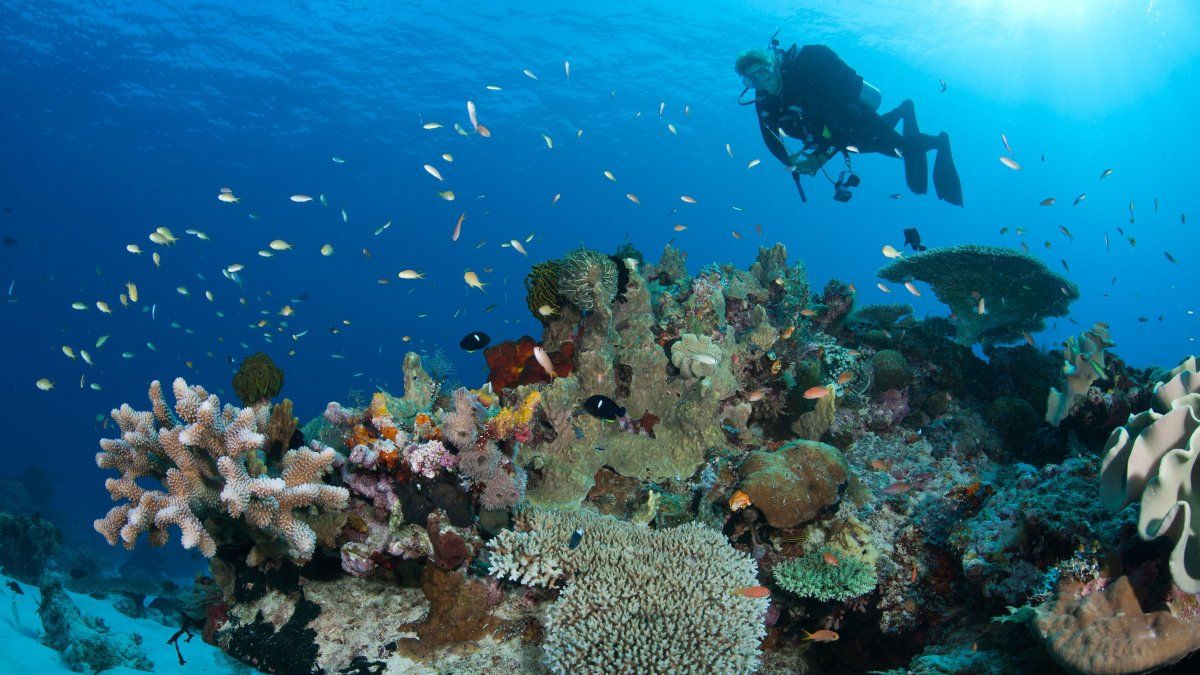Two scientists came across a discovery that opens a window to the past and future of the marine worldin a discreet office of the London Natural History Museum. The paleontologist Ken Johnson and the marine biologist Nadia Santodomingorevealed a collection of fossilized corals, some with more than 30 million years.
These corals were collected from one of the most diverse ecosystems on the planet: the coral triangle, also known as the “Amazon of the seabed”.
This space, which covers waters of Malaysia, the Philippines, Indonesia, Papua New Guinea, East Timor and the Solomon Islandsis home to an impressive variety of marine life that has endured for millions of years.
These fossils come from a collecting effort carried out more than a decade ago in Indonesia. There, Johnson and Santodomingo, in collaboration with the AIndonesia Geological Agencythey extracted eight tons of rock containing more than 200 species of coral.
The scientists explained their research
His research seeks to understand how these corals withstood extreme climate and environmental changes throughout history. “It is fascinating to see that many of the coral species that existed millions of years ago are still here today, resisting time and adversity,” says Santodomingo in statements to the BBC.
The coral triangle is home to 75% of all known coral speciesin addition to 3,000 species of reef fish and six of the seven species of sea turtles in the world. This region acts as a “underwater city” where small marine animals, known as polyps, build coral structures that other creatures colonize.
“Corals are like the foundations of buildings in a city”explains Santodomingo. “They are refuges, hunting areas and breeding places for many species.” When polyps die, their skeletons are left as an empty home where sponges, clams and other organisms find refuge and space to live, making these reefs a fundamental pillar for marine biodiversity.
Unlike other reefs in the world, the coral triangle did not suffer mass extinctionswhich allows its diversity to persist. In other parts of the planet, such as Caribbeanclimatic events caused the extinction of species millions of years ago, reducing their current diversity.
Coral triangle biodiversity.jpg
The beautiful biodiversity of this underwater world of yesteryear.
Flickr
Besides, “The cloudy water in this region seems to play a protective rolehelping corals resist bleaching, a phenomenon in which corals lose their color and, with it, their resistance, by expelling the algae that live in symbiosis with them,” the scientists explained.
Changes in biodiversity
Recent research showed that corals that grow in murky waterslike those of Sakar in Malaysiahave less likely to suffer whitening during heat waves compared to those in clear waters.
A 2020 study showed that only 10% of corals in turbid waters bleached, compared to 37% in crystal clear waters. This “protective” effect is due, according to scientists, to the fact that turbidity reduces exposure to intense light, reducing thermal stress on the corals. However, these environments are under threat from plastic pollution and other waste from nearby human activities.
“LHuman activity exerts additional pressure about these resilient habitats,” warns Johnson. The researchers proposed urgent measures, such as the “ccreation of marine protected areas in the coral triangle to save these unique ecosystems and allow them to continue being a refuge for life in a context of climate change.
As clear-water reefs in the rest of the world continue to decline, researchers note that These murky reefs could offer a sanctuary of sorts for marine species that would otherwise face extinction.
With modern technology, Johnson and his team also eThey explored fossils collected decades ago in the museumusing computed tomography and other advanced techniques to analyze their structures without damaging them, opening new avenues of research into the resilience of these corals.
For Johnson, pReserving these historic fossil collections is essential: “We do not know what technological capabilities there will be in the future to study these corals,” reflected the paleontologist.
“Future generations could discover answers to questions that we are not able to ask today,” he continued, emphasizing the importance of maintaining research interest.
Museum collections are, in this sense, guardians of the past and the future, offering scientists an invaluable perspective to protect current marine ecosystems against a environment in constant transformation.
Source: Ambito
David William is a talented author who has made a name for himself in the world of writing. He is a professional author who writes on a wide range of topics, from general interest to opinion news. David is currently working as a writer at 24 hours worlds where he brings his unique perspective and in-depth research to his articles, making them both informative and engaging.




